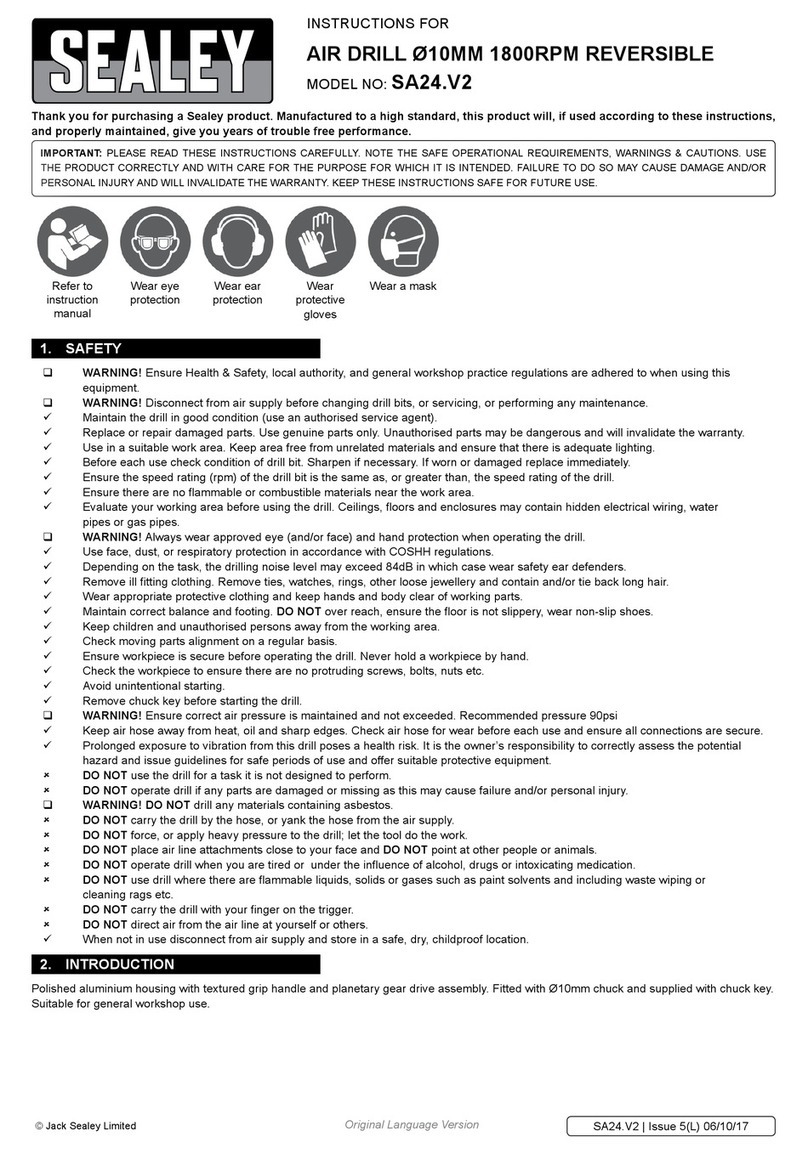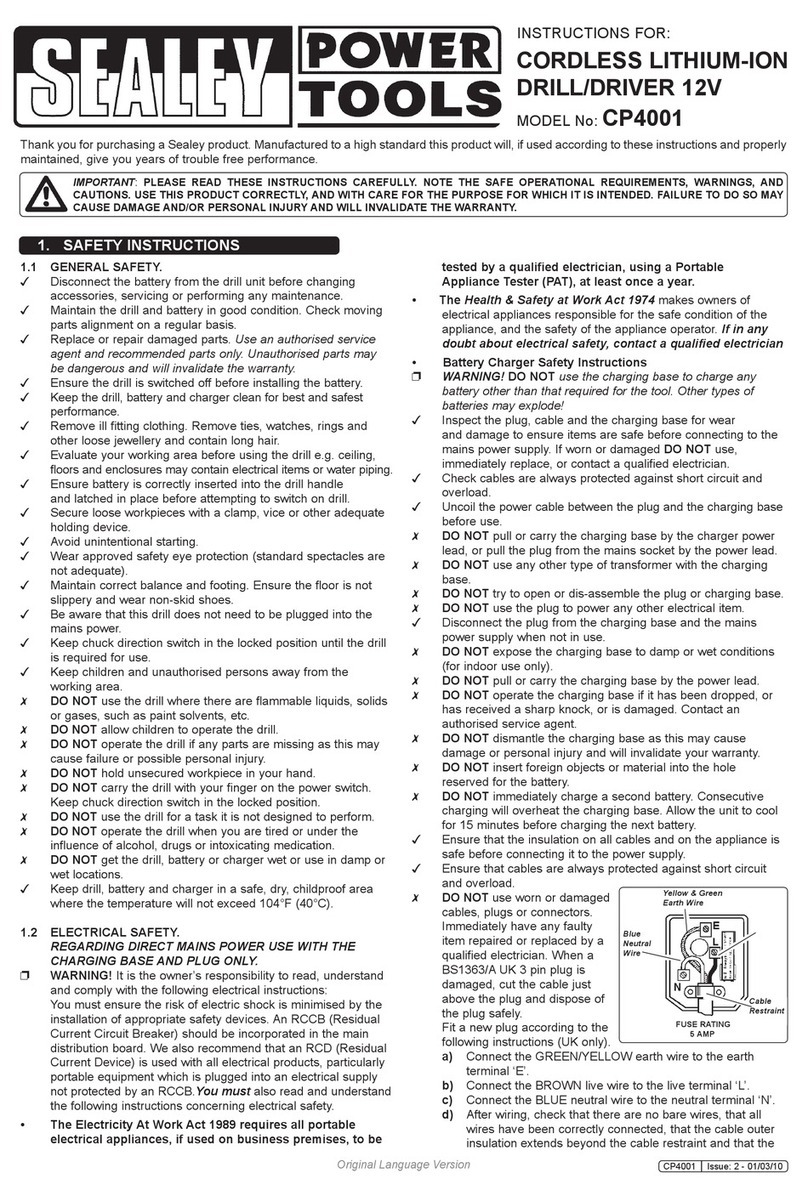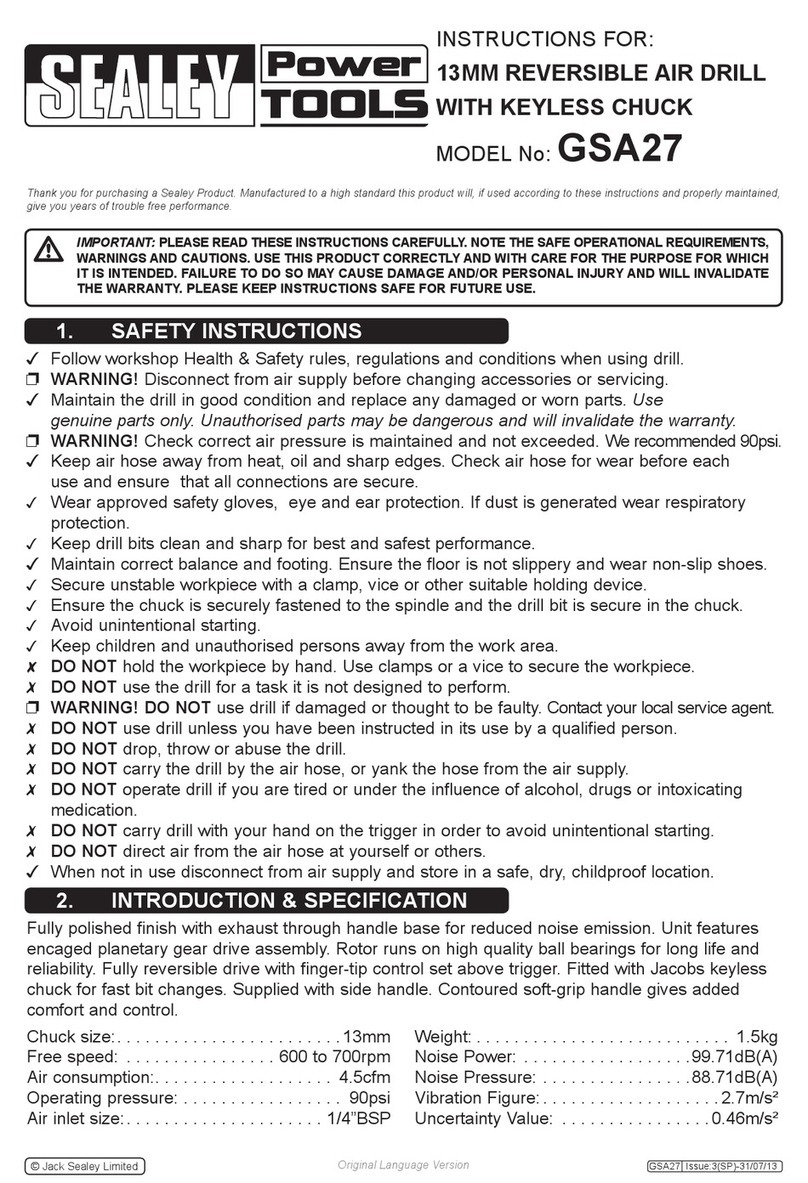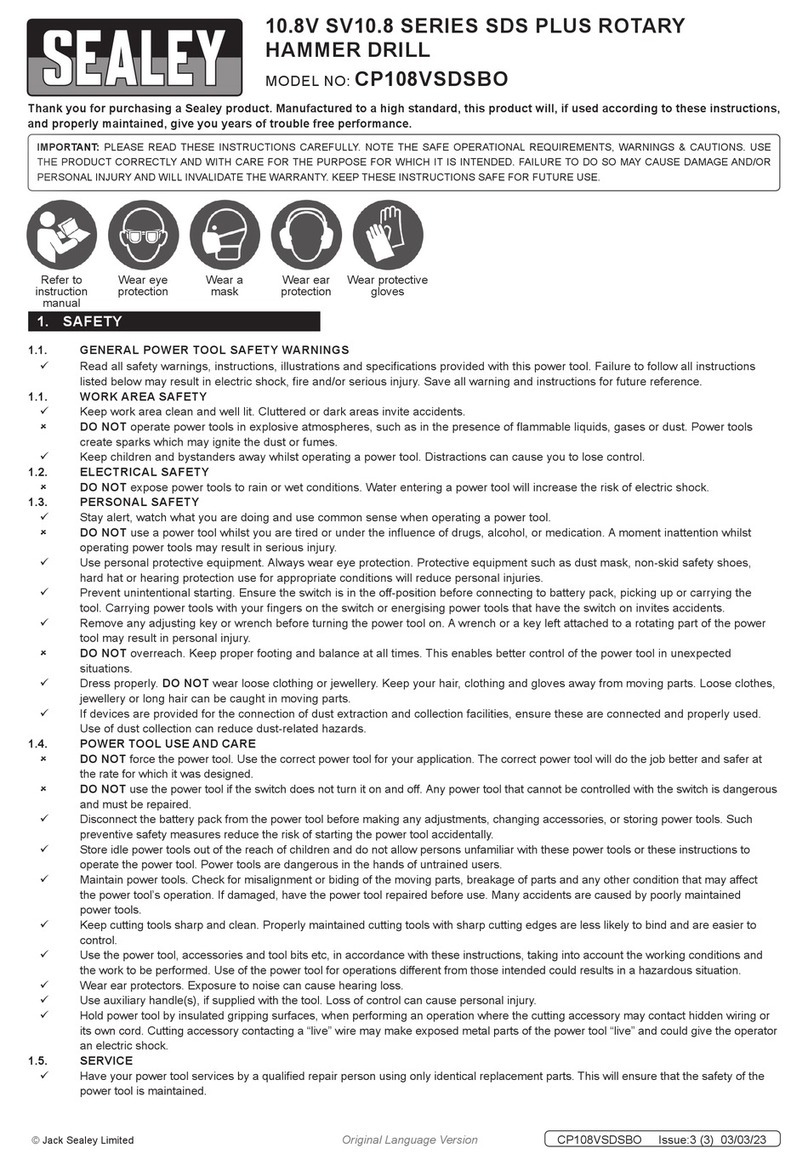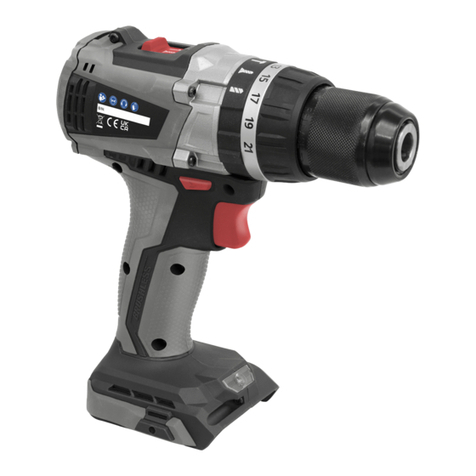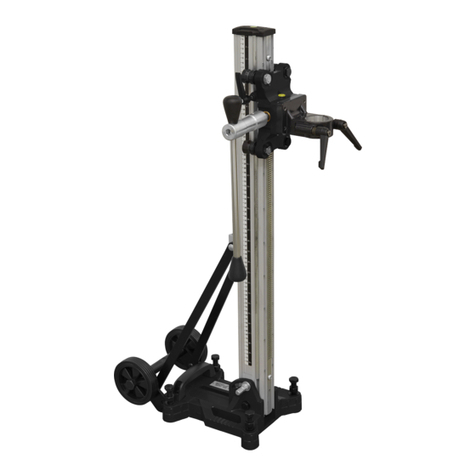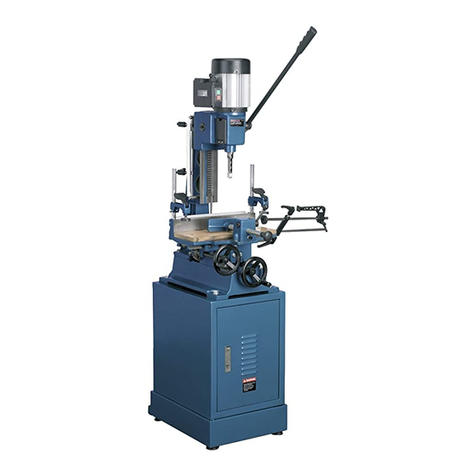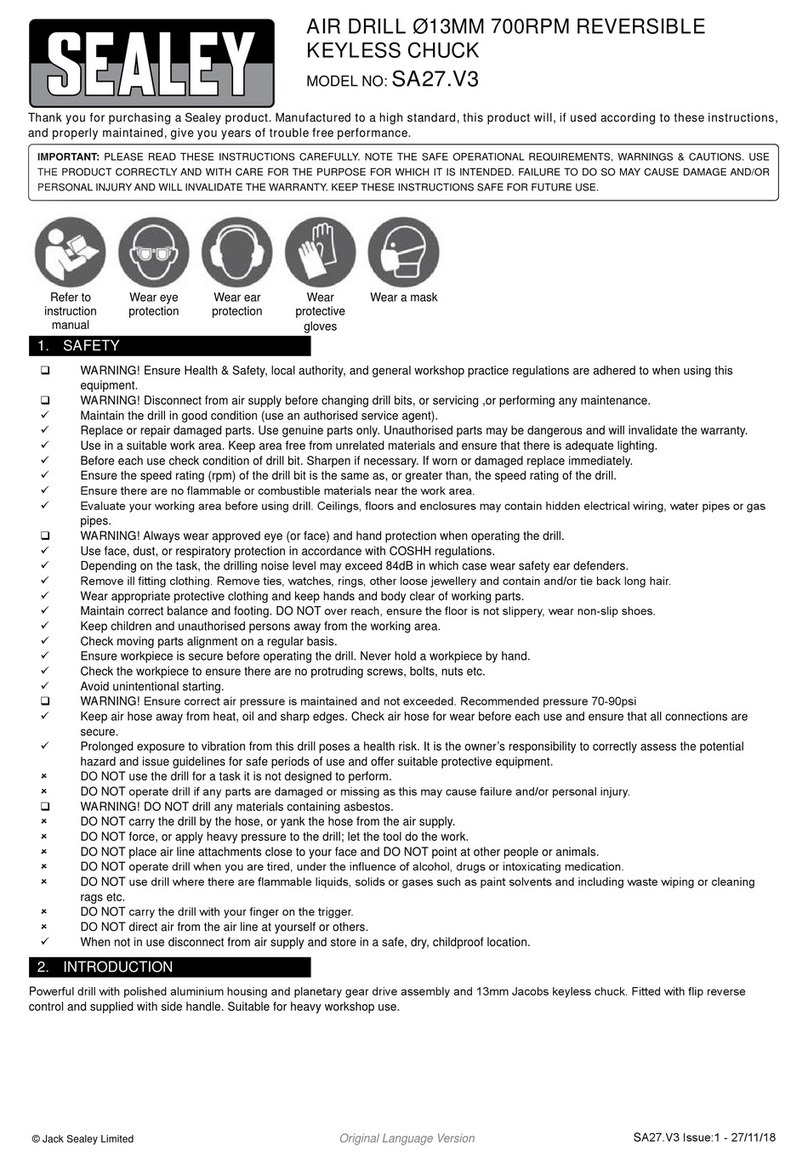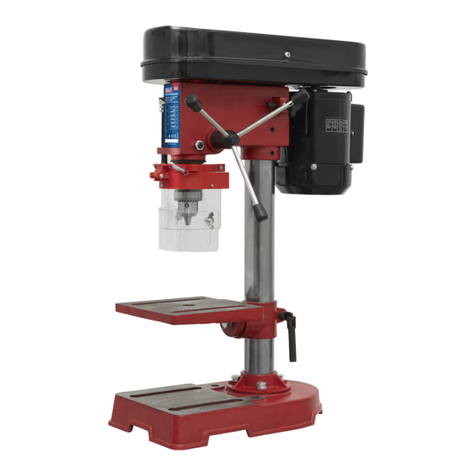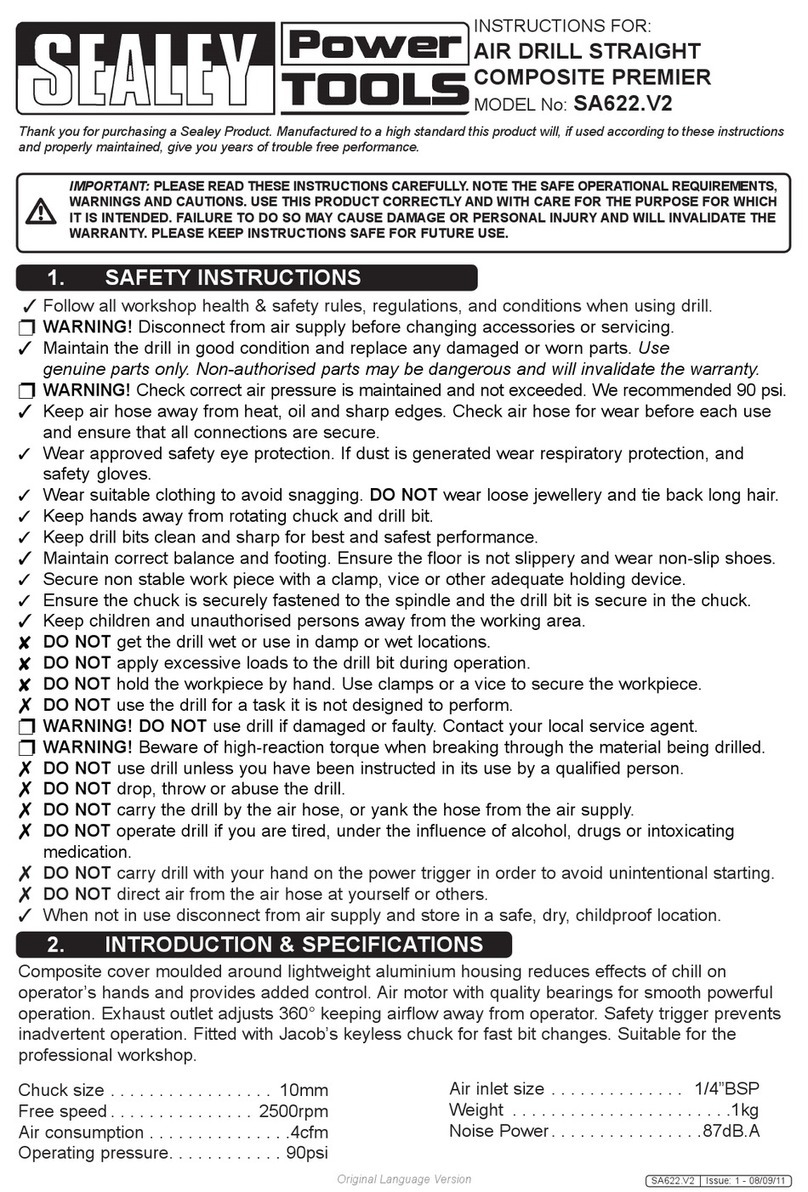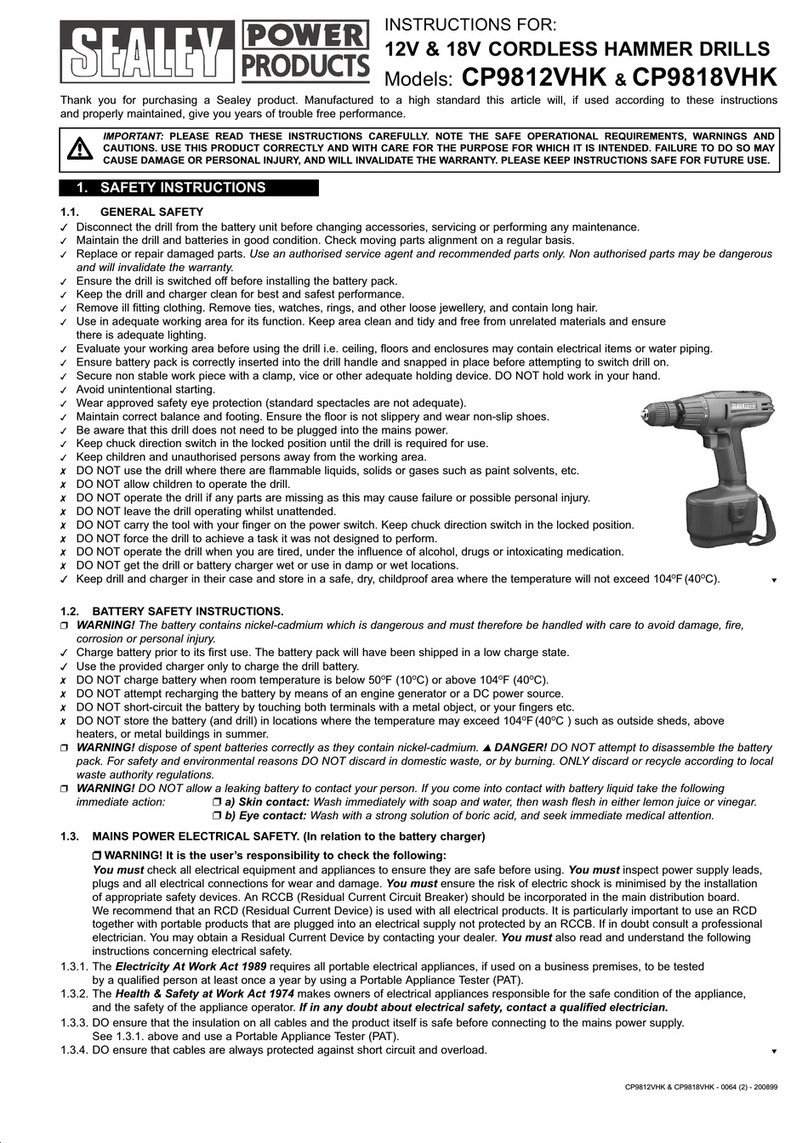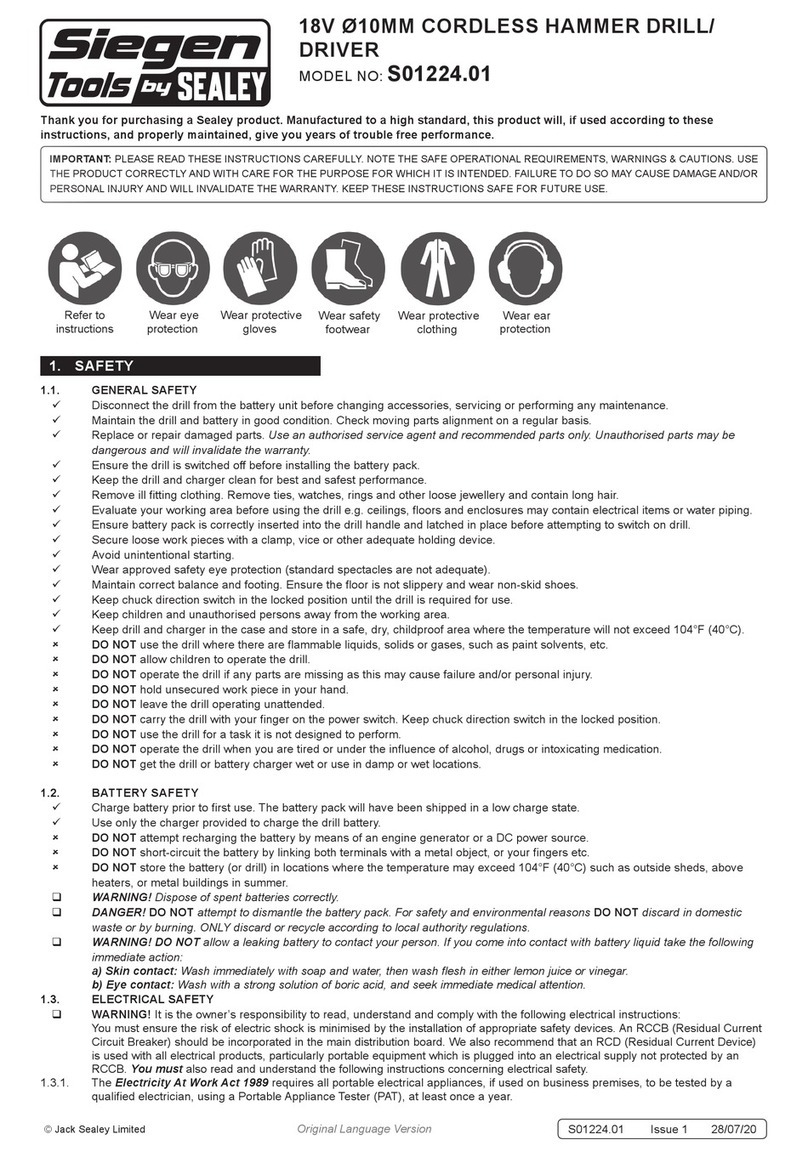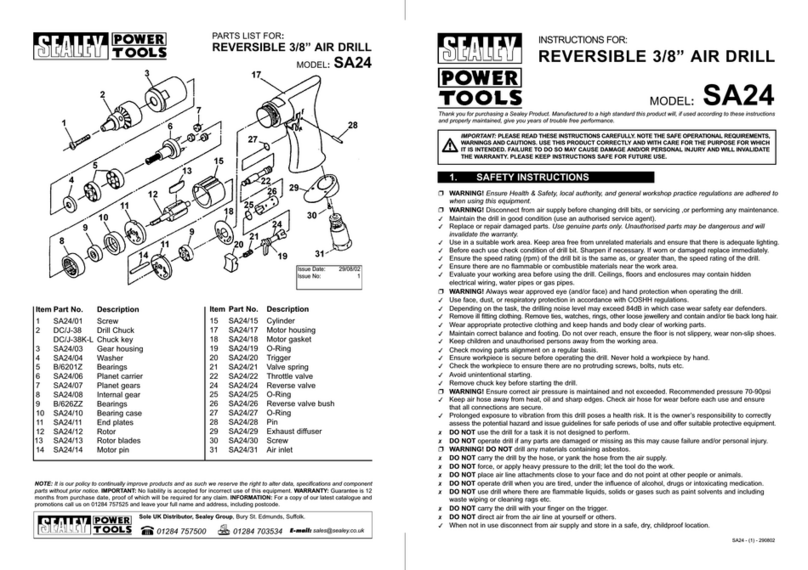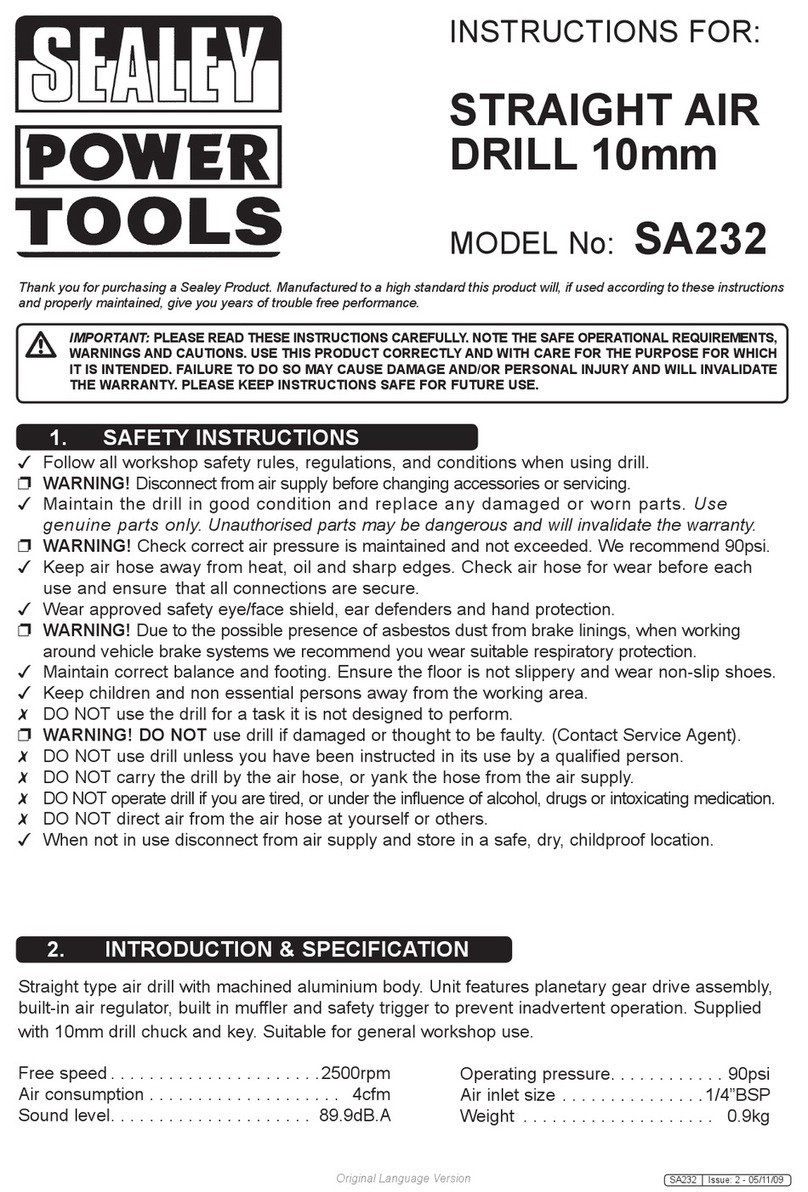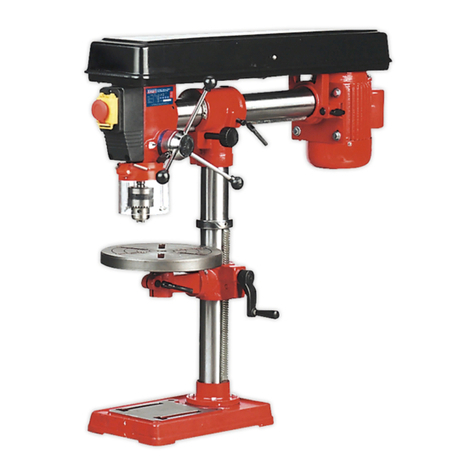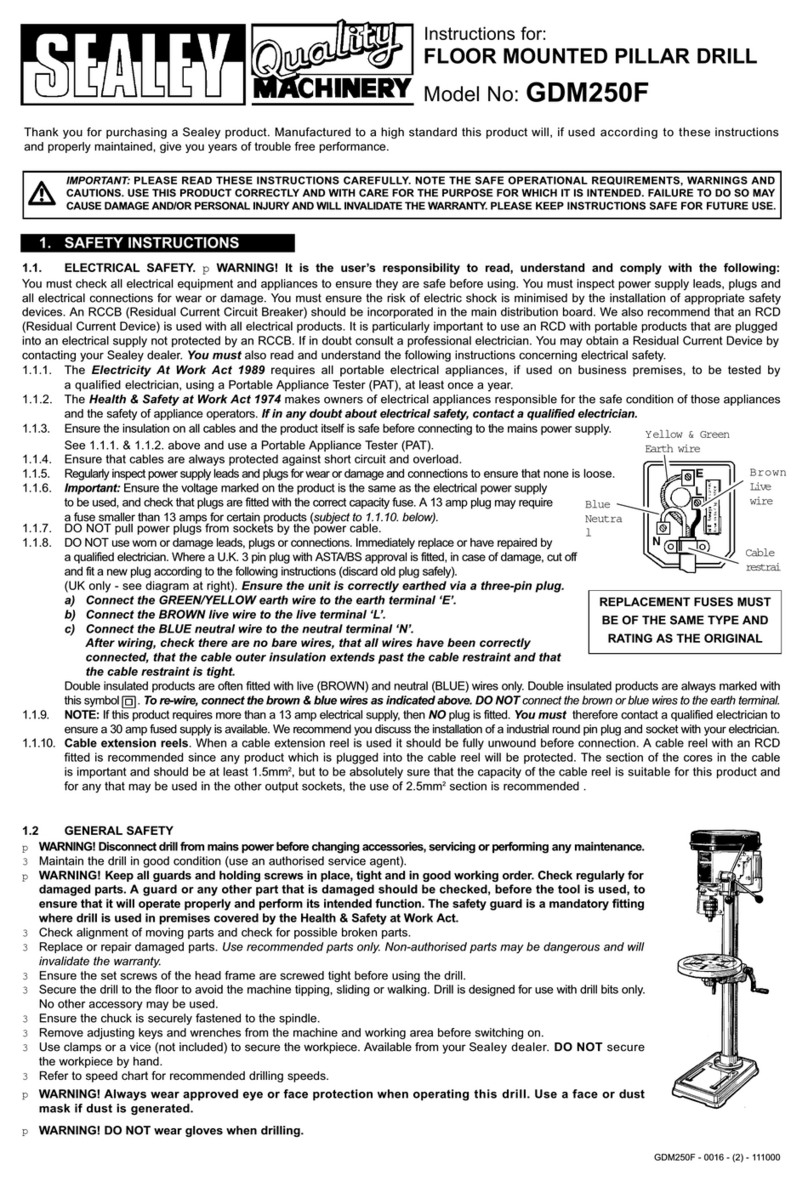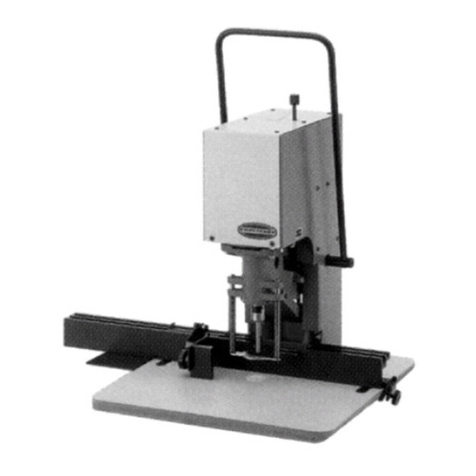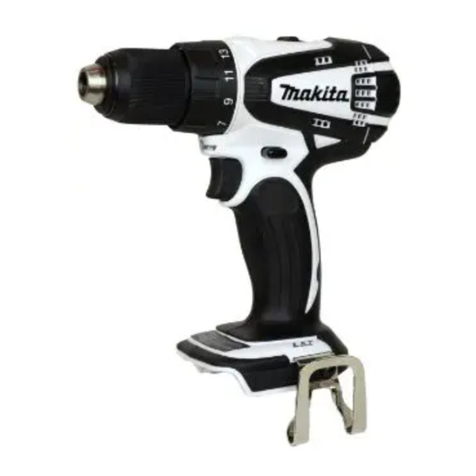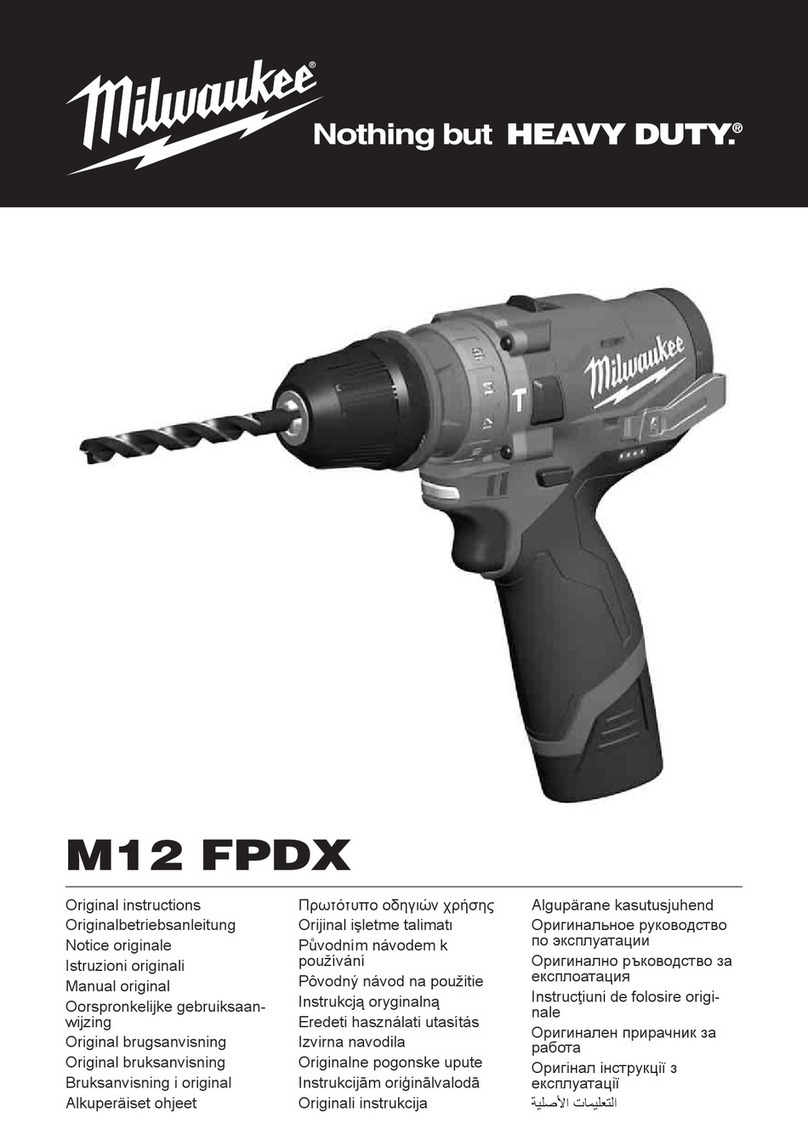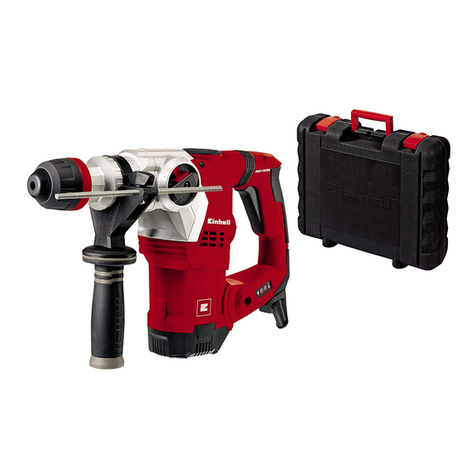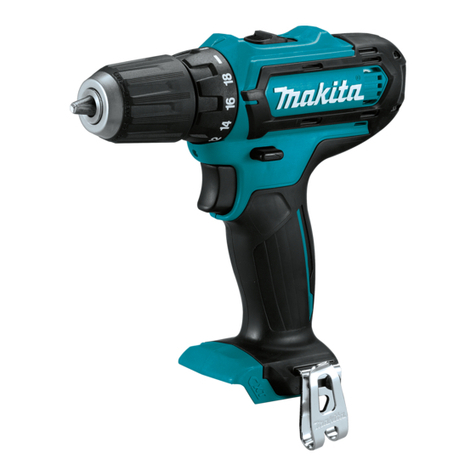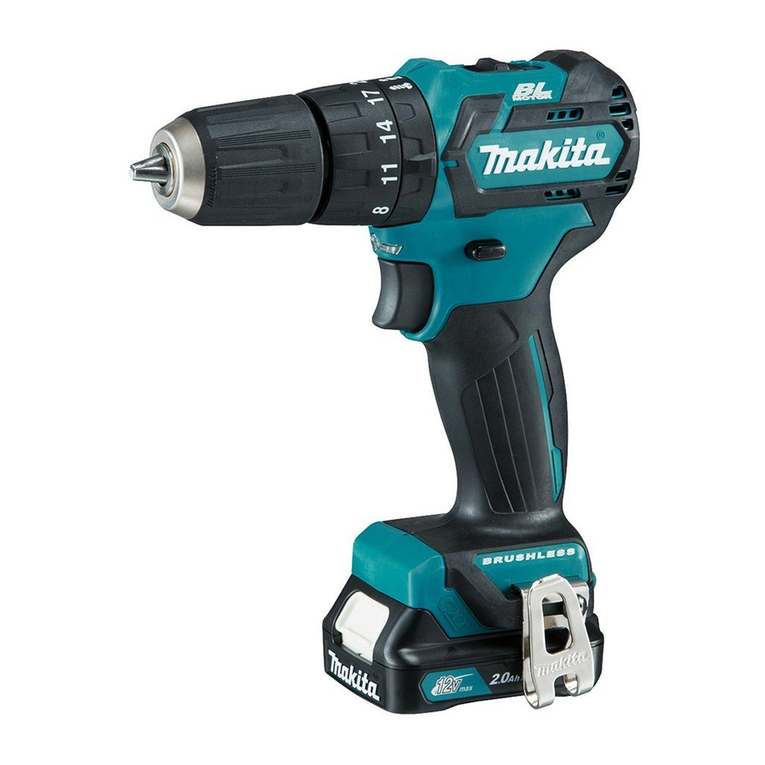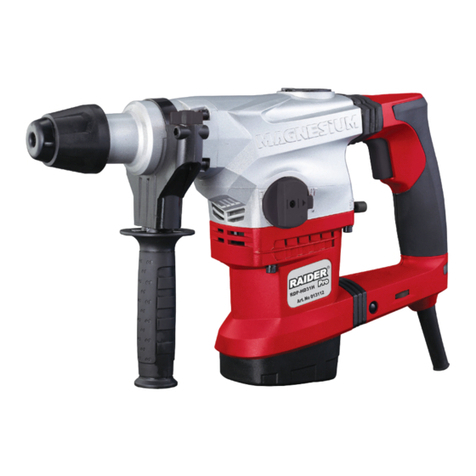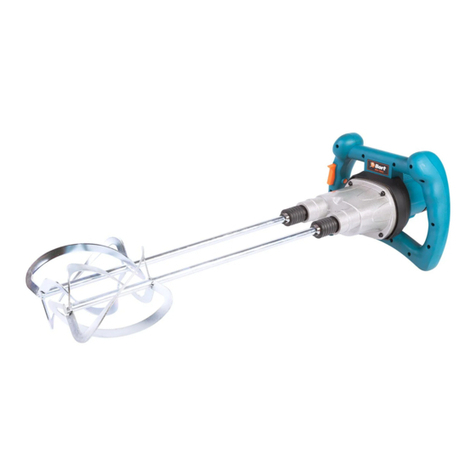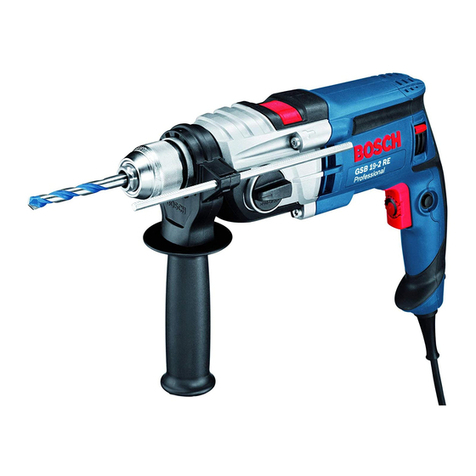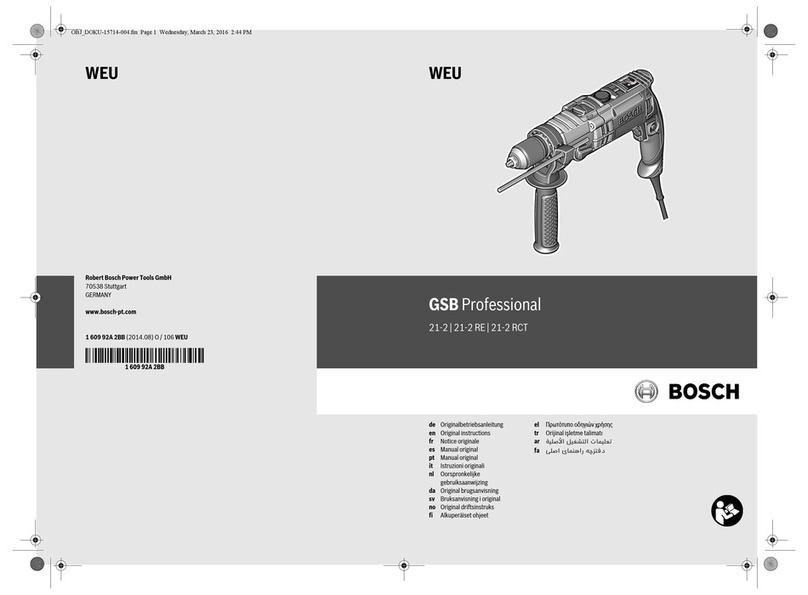
INSTRUCTIONS FOR:
VARIABLE SPEED HAMMER DRILLS
MODELS:
SD800.V2 & SD1000.V2
Thank you for purchasing a Sealey product. Manufactured to a high standard this product will, if used according to these instructions and properly
maintained, give you years of trouble free performance.
1. SAFETY INSTRUCTIONS
IMPORTANT: PLEASE READ THESE INSTRUCTIONS CAREFULLY. NOTE THE SAFE OPERATIONAL REQUIREMENTS, WARNINGS & CAUTIONS.
USE THE PRODUCT CORRECTLY AND WITH CARE FOR THE PURPOSE FOR WHICH IT IS INTENDED. FAILURE TO DO SO MAY CAUSE
DAMAGE AND/OR PERSONAL INJURY AND WILL INVALIDATE THE WARRANTY. PLEASE KEEP INSTRUCTIONS SAFE FOR FUTURE USE.
1.2 GENERAL SAFETY
Disconnect the drill from the mains power before changing accessories, servicing or performing any maintenance.
Maintain drill in good condition. Check moving parts and alignment and keep drill bits sharp. If necessary use an authorised service agent.
Replace or repair damaged parts. Use recommended parts only. Unauthorised parts may be dangerous and will invalidate the warranty.
Wear approved safety eye protection with side shields and a dust mask if drilling generates dust. Rubber gloves are recommended when
using out doors and safety gloves when drilling items such as steel, brick work etc,
Remove ill fitting clothing. Remove ties, watches, rings, other loose jewellery and contain long hair.
Use drill in an adequate working area for its function, keep area clean, tidy and free from unrelated materials and ensure adequate lighting.
Prevent body contact with grounded surfaces to avoid electric shock i.e. pipes, radiators, ranges, refrigerators etc.
Evaluate your working area before using the drill i.e. ceiling, floors and enclosures may contain hidden electrical wires or water piping.
Maintain correct balance and footing.
DO NOT over-reach and ensure the floor is not slippery and wear non skid shoes.
The supplementary handle grip should always be attached for use.
Keep children and unauthorised persons away from the working area.
DO NOT hold unsecured work in your hand.
Secure non stable work piece with a clamp, vice or other adequate holding device.
Avoid unintentional starting and ensure the lock on button is disengaged before use.
DO NOT force the drill to achieve a task it was not designed to perform.
DO NOT operate drill where there are flammable liquids or gasses.
DO NOT get the drill wet or use in damp or wet locations.
DO NOT operate the drill if any parts are missing or the drill is damaged as this may cause failure and/or possible personal injury.
DO NOT operate the drill when you are tired, under the influence of alcohol, drugs or intoxicating medication.
DO NOT carry the drill with your finger on the power switch, or carry by the power cord, or leave the drill running whilst unattended.
When not in use switch drill off, remove plug from power supply, clean the drill and store in safe, dry, child proof area. ,
WARNING! It is the responsibility of the owner and the operator to read, understand and comply with the following:
You must check all electrical products, before use, to ensure that they are safe. You must inspect power cables, plugs, sockets and any other
connectors for wear or damage. You must ensure that the risk of electric shock is minimised by the installation of appropriate safety devices. A
Residual Current Circuit Breaker (RCCB) should be incorporated in the main distribution board. We also recommend that a Residual Current
Device (RCD) is used. It is particularly important to use an RCD with portable products that are plugged into a supply which is not protected by
an RCCB. If in any doubt consult a qualified electrician. You may obtain a Residual Current Device by contacting your Sealey dealer.
You must also read and understand the following instructions concerning electrical safety.
1.1.1. The Electricity at Work Act 1989 requires all portable electrical appliances, if used on business premises, to be tested by a qualified
electrician, using a Portable Appliance Tester (PAT), at least once a year.
1.1.2. The Health & Safety at Work Act 1974 makes owners of electrical appliances responsible for the safe condition of those appliances
and the safety of the appliance operators. If in any doubt about electrical safety, contact a qualified electrician.
1.1.3. Ensure that the insulation on all cables and on the appliance is safe before connecting it to the power supply. See 1.1.1. and 1.1.2.
and use a Portable Appliance Tester.
1.1.4. Ensure that cables are always protected against short circuit and overload.
1.1.5. Regularly inspect power supply cables and plugs for wear or damage and check all
connections to ensure that none are loose.
1.1.6. Important: Ensure that the voltage marked on the appliance matches the power supply
to be used and that the plug is fitted with the correct fuse - see fuse rating at right.
1.1.7. DO NOT pull or carry the appliance by the power cable.
1.1.8. DO NOT pull the plug from the socket by the cable.
1.1.9. DO NOT use worn or damaged cables, plugs or connectors. Immediately have any faulty
item repaired or replaced by a qualified electrician. When an ASTA/BS approved UK
3 pin plug is damaged, cut the cable just above the plug and dispose of the plug safely.
Fit a new plug according to the following instructions (UK only).
a) Connect the GREEN/YELLOW earth wire to the earth terminal ‘E’.
b) Connect the BROWN live wire to the live terminal ‘L’.
c) Connect the BLUE neutral wire to the neutral terminal ‘N’.
d) After wiring, check that there are no bare wires, that all wires have been correctly
connected, that the cable outer insulation extends beyond the cable restraint and
that the restraint is tight.
Double insulated products, which are always marked with this symbol , are fitted with live (brown) and neutral (blue) wires only.
To rewire, connect the wires as indicated above - DO NOT connect either wire to the earth terminal.
1.1.10. Products which require more than 13 amps are supplied without a plug. In this case you must contact a qualified electrician to ensure
that a suitably rated supply is available. We recommend that you discuss the installation of an industrial round pin plug and socket
with your electrician.
1.1.11. If an extension reel is used it should be fully unwound before connection. A reel with an RCD fitted is preferred since any appliance
plugged into it will be protected. The cable core section is important and should be at least 1.5mm2, but to be absolutely sure that
the capacity of the reel is suitable for this product and for others which may be used in the other output sockets, we recommend the
use of 2.5mm2section cable. If extension reel is to be used outdoors, ensure it is marked for outdoor use.
Blue
Neutral
Wire
Yellow & Green
Earth Wire
Cable
Restraint
Brown
Live
Wire
FUSE RATING
13AMP
Original Language Version SD800.V2 & SD1000.V2 Issue No.1 27/07/10
